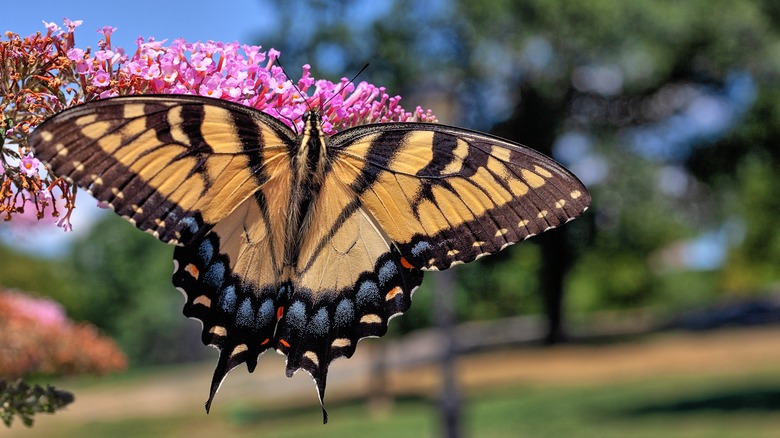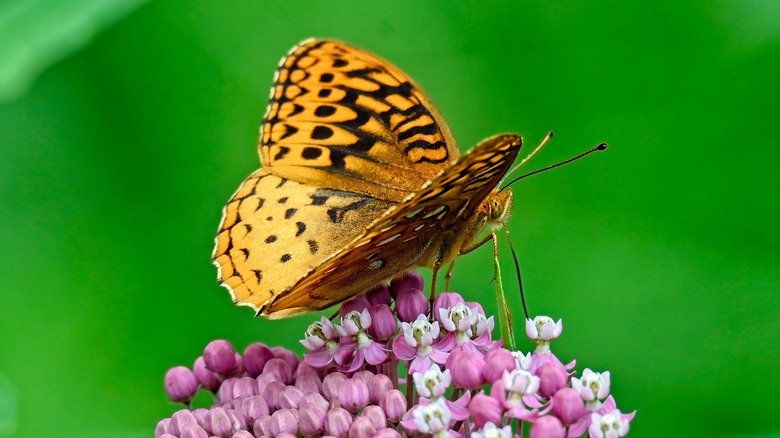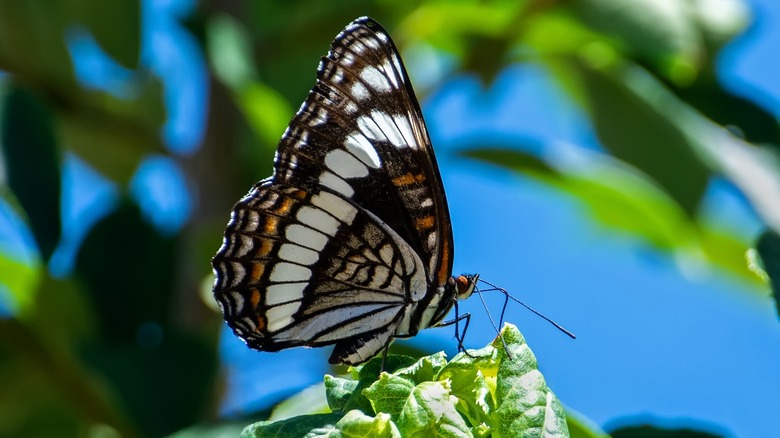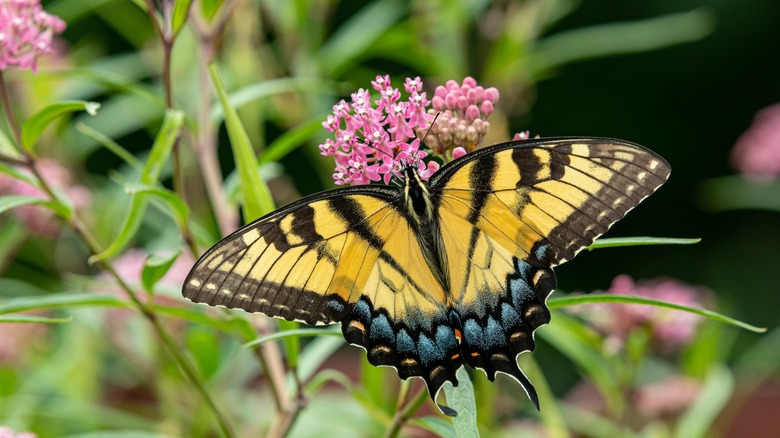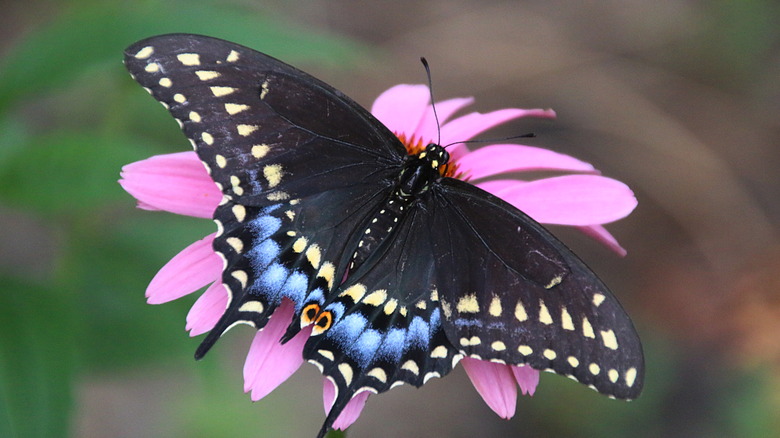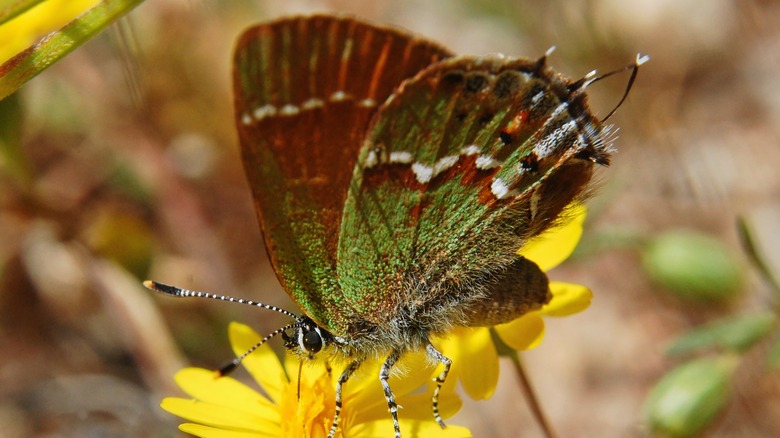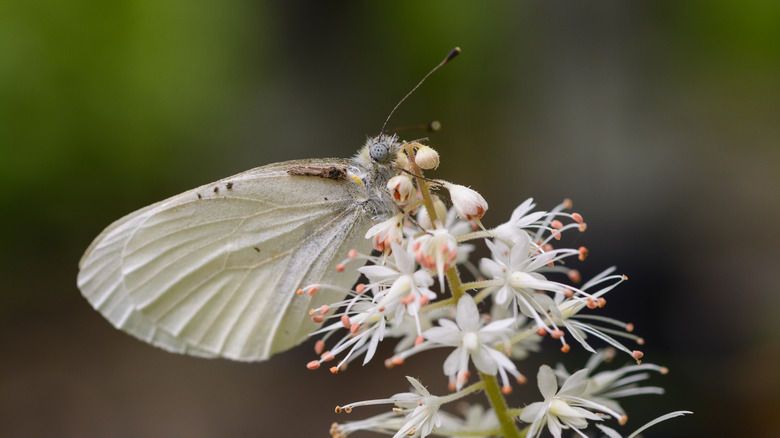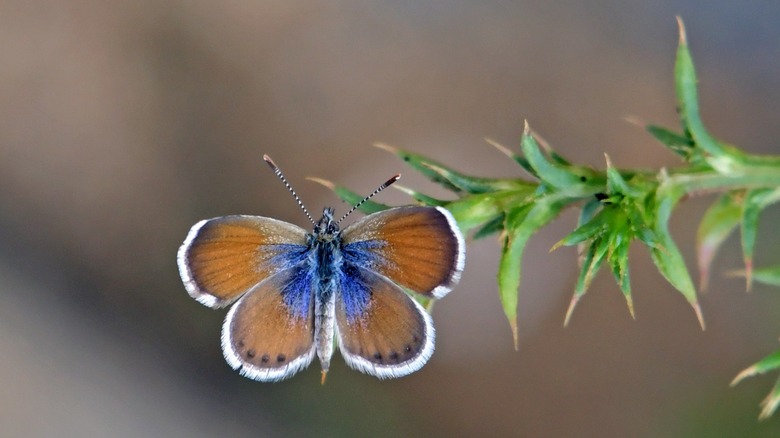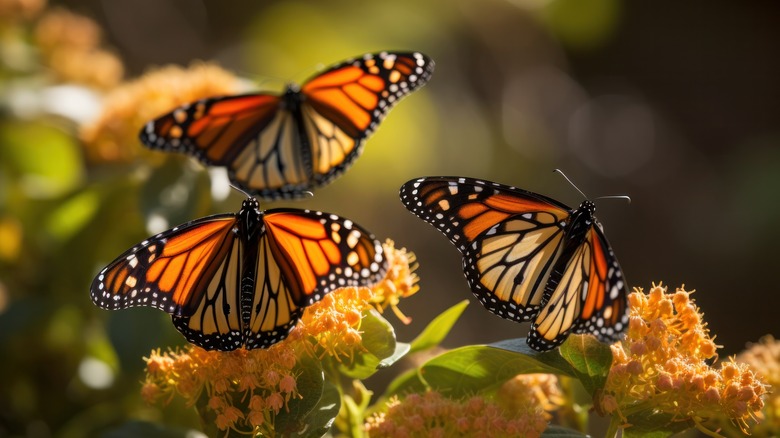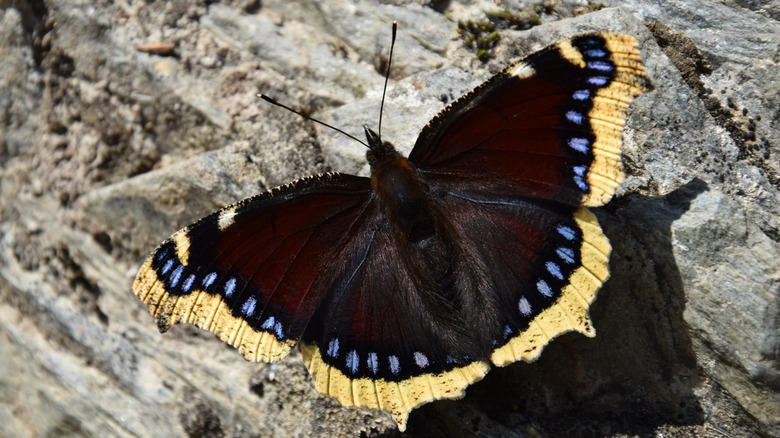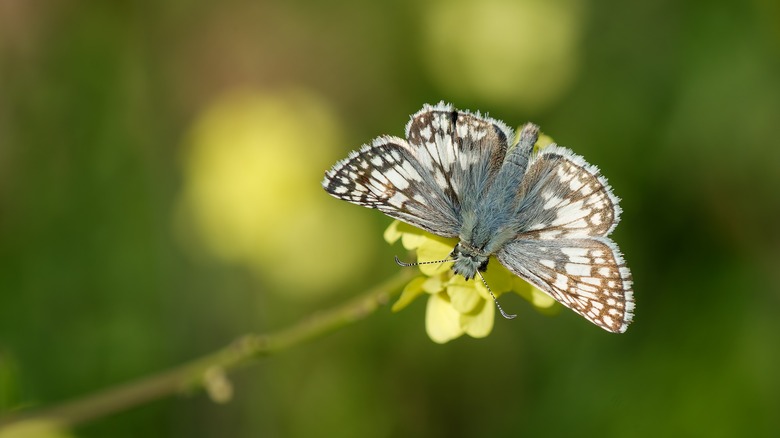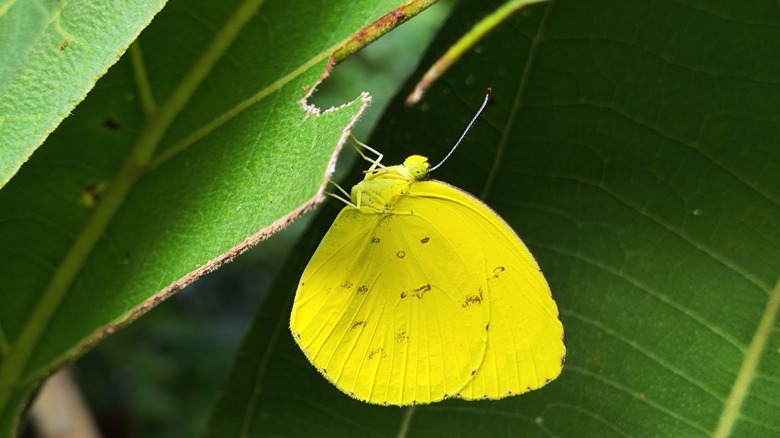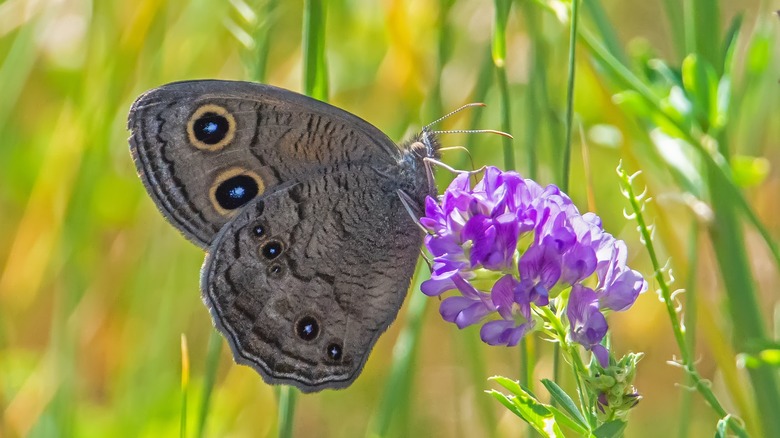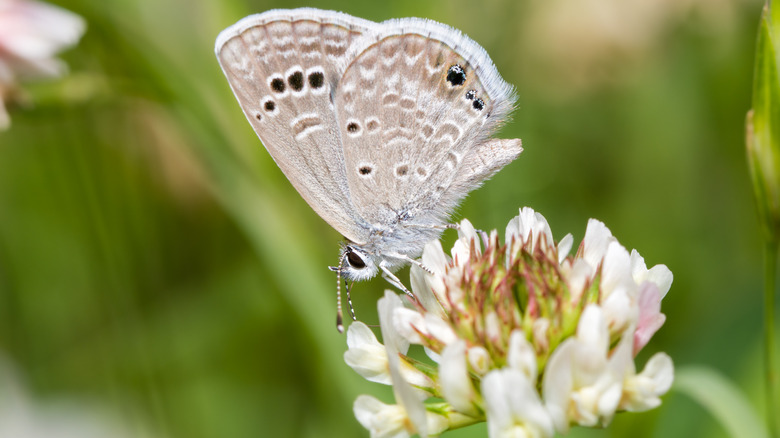13 Breathtaking Butterflies You Might See Flying Around Your Yard & Garden
Want to know more about the beautiful winged visitors in your backyard? There are so many extraordinary butterflies that are common in residential areas across North America, including majestic monarchs, striking swallowtails, ethereal orange sulphurs, and many more. Each of these butterflies has distinctive characteristics that make them stand out. For example, common wood-nymphs have large spots on their wings that look like googly eyes, and mourning cloaks have dramatic dark wings with bursts of aqua blue and yellow.
If you don't already have vibrant flower beds teeming with butterflies, learning about these species may inspire you to attract butterflies to your garden by growing the nectar-producing plants that they love. By creating a butterfly habitat in your backyard, you can help at-risk species such as monarch butterflies to thrive. These lovely creatures contribute greatly to the health of our ecosystem by pollinating plants and helping them produce new seeds. Let's identify some of the most common butterflies that you may be seeing around your home and the many ways you can encourage them to keep coming back.
Great spangled fritillary
These striking butterflies thrive from mid- to late summertime and are found in verdant areas with moisture such as fields, pastures, and prairies. Most sightings of the great spangled fritillary occur in eastern North America and throughout California. There are many varieties of the fritillary butterfly, such as the regal, variegated, Diana, and Gulf fritillary, each of them beautiful in their own unique way. The original great spangled butterfly has orange wings with dark patterns and a beige-white trim. Their favorite nectar sources are purple coneflowers, milkweed, thistles, bergamot, red clovers, and mountain laurels.
Weidemeyer's admiral
With large jet-black wings, vivid white spots, and orange accents, this butterfly is truly breathtaking. It has a small population in Canada, specifically in Alberta, and has been designated an at-risk species. However, these butterflies continue to thrive in the United States, from Montana down to New Mexico and west to California. They frequent forests and aspen groves to feed on tree sap as well as rural residential areas for flower nectar, so if you live in a small town, you may be lucky enough to spot them on your property.
Tiger swallowtail
These beautiful yellow patterned butterflies are found across Canada and the United States. They are characterized by their black markings that resemble tiger stripes, with orange and blue specks that are visible if you look closely. There are many varieties of this butterfly throughout North America, with subtle differences in their visual appearance. They are mostly found in forests throughout the spring and summer, but if you have a garden full of thriving flowers, you may just spot a few fluttering around your backyard in search of nectar. Like many bird species, tiger swallowtails love black cherry trees.
Black swallowtail
Much like the tiger swallowtail, the black swallowtail lives in many parts of North America. Visually, it bears similarities to the tiger swallowtail, but this butterfly is mainly black with distinctive yellow, orange, red, and blue markings on its wings. The black swallowtail can be spotted in meadows, forests, fields, prairies, and backyards. It is especially common in states east of the Rocky Mountains. Black swallowtails love colorful flowers such as zinnias and purple coneflowers. In their caterpillar stage, they are especially drawn to parsley plants.
Juniper hairstreak
Hairstreak butterflies are common in North America, and each species has a distinctive appearance. The juniper hairstreak is a thriving species found all over the United States, recognizable for its shiny green wings with rust-red contrasts. These butterflies are gifted at camouflage and are able to blend in seamlessly with their surroundings. However, if you spot one mid-flight, their lustrous green wings are hard to miss. These butterflies are attracted to eastern red cedars and flowers like milkweed, winter cress, butterfly weed, and white sweet clover. Try planting some varieties of milkweed to attract these gorgeous flutterers.
Appalachian azure
The Appalachian azure butterfly has an ethereal blue and powdery white appearance with small dark spots. Most species of this butterfly live primarily around the shady and moist areas of hardwood forests in the Appalachian Mountains but have been found in the Ozarks and parts of New York State as well. This particular butterfly faces threats to its population as a result of invasive plants. The best way to encourage them to visit your yard is to grow the slightly unpleasant-smelling black cohosh, which is the only plant they lay their eggs on.
Western pygmy blue
The western pygmy blue is so small, you just might miss it. In fact, it's the smallest butterfly that lives in the United States. It has tiny copper-colored wings with dark blue contrasts and black spots. These butterflies are quite common, especially in southern and southwestern states, and it is known to migrate up to Oregon and Nebraska and east to Arkansas. The pygmy blue thrives in alkalinity, especially in environments such as deserts and the salt marshes of Louisiana, Alabama, and Florida. These butterflies love horse purslane, seepweed, and American glasswort.
Monarch
Monarchs are the quintessential butterfly species, and they are truly extraordinary. Their orange- and black-laced wings make them instantly recognizable, and seeing one in the wild or in your garden is always exciting. What makes monarch butterflies so incredible is their annual migration. Millions of monarchs take flight every year, traveling up to 3,000 miles to warmer climates for the winter. Sadly, these majestic butterflies are facing population declines. You can attract monarch butterflies to your garden and help them thrive by planting milkweed native to your region — just make sure to keep your monarch visitors away from wasps.
Mourning cloak
If you've ever seen a butterfly in the winter, it was most likely a mourning cloak. They are common throughout North America, especially in northern areas where the butterflies are known to overwinter. As their name suggests, their large wings are cloaked in maroon and black, with a dramatic yellow trim and light blue spots. They are spotted in all kinds of environments, from suburbs to forests. They prefer to feast on rotting fruit more than flower nectar, so leaving a bowl of fruit peels in your garden may entice them to visit your yard.
Common checkered-skipper
This unique butterfly is found all across the United States. It does not thrive in harsh winters, but can still be found in parts of Canada at certain times of the year. The common checkered-skipper gets its name from the checkered pattern on its wings. Females have a beautiful gray shine, while males have more blue hair on the body. These butterflies are drawn to yards and gardens to feed on nectar from composite flowers and bask in the sunshine. They prefer places with low vegetation, and their population grows considerably by late summer.
Orange sulphur
Orange sulphur butterflies are very common throughout North America. They have pale orange and yellow wings that you have likely seen before, especially if you grow alfalfa plants or live near a field where it is grown. These butterflies also love milkweed as well as dandelions, clovers, and sunflower varieties. You may have even spotted these butterflies clustering in puddles, a common behavior of male orange sulphurs when they are gathering nutrients and preparing to mate. Plant their favorite flowers in your garden, and you will likely have orange sulphurs flocking to your yard.
Common wood-nymph
Common wood-nymphs are typically found in most Canadian provinces and the continental United States, specifically in southern Canada and around the Adirondack woodlands. They thrive in mid- to late summer, visiting all kinds of environments from marshes and bogs to prairies and open fields. While smaller than tiger swallowtails and monarchs, common wood-nymphs are hard to miss due to their unique visual appearance. Their nickname is the goggle-eye butterfly because of the spots on their wings that resemble large eyes. Like mourning cloaks, these butterflies enjoy feasting on rotting fruit as well as flower nectar.
Reakirt's blue
The beautiful pale Reakirt's blue butterflies prefer to spend time in southwestern states and migrate as far north as Canada at certain times of the year. Male butterflies have blue bodies and gray-blue wings with white trim around the edges, and females are dustier-colored. The outsides of the wings have black spots that resemble wood-nymph eyes. These butterflies prefer the nectar of spearmint, clover, mimosas, and indigo plants. They are known to frequent gardens and grassy areas, meadows, creeksides, and overgrown areas with plenty of weeds — for butterfly lovers, some weeds are worth keeping.
